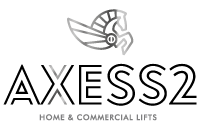Understanding Wheelchair Lifts
Wheelchair lifts have revolutionised the means by which individuals with mobility challenges traverse diverse terrains. Serving both public establishments and private homes, these lifts ensure a smooth transition across various levels. In the expansive world of mobility solutions, their emergence has been nothing short of transformative.
In the United Kingdom alone, where over 1.2 million people rely on wheelchairs, the pressing need for accessible and secure transport systems is evident. While traditional approaches such as ramps and passenger lifts might not always be feasible due to architectural limitations, wheelchair lifts provide a compelling solution. They cater to a wide array of needs, from those tailored for vehicular transportation to those facilitating vertical transitions between floors in residential or commercial buildings.
Types of Wheelchair Lifts
Different variants like the vertical platform lifts (VPL), which let users stay seated in their wheelchair, and inclined lifts running parallel to stairs, highlight their versatility. More than mere convenience, these lifts epitomise empowerment, granting users the cherished freedom to navigate daily life effortlessly. Their adaptability further extends to both indoor and outdoor settings, reinforcing their vital role in enhancing accessibility.
Ensuring User Security
Safety Barriers and Flaps
Many platform lifts are equipped with folding flaps that serve as protective barriers, effectively preventing any unintended movement. Prior to initiating the lift operation, it is of utmost importance to regularly examine the presence and stability of these barriers in order to guarantee safe usage.
Lock the Wheelchair
It is advisable to secure the wheels of the wheelchair before commencing the ascent or descent of the lift. This precautionary measure guarantees that the wheelchair will remain stationary throughout the entire transition process.
Accessible Safety Features and Controls
Clearly Marked Controls
The labels on the lift controls need to be written in a way that is both understandable and readily apparent in order to make the controls more user-friendly. Everyone who uses the lift is responsible for familiarising themselves with these controls in order to guarantee that the lift operates in a way that is both straightforward and clear.
Emergency Stop
Users have the ability to promptly halt the operation of the elevator in the event of an emergency, owing to the standard emergency stop feature incorporated in the majority of elevators. It is imperative to ensure the continued functionality of the emergency stop by conducting regular testing.
Selecting the Lift’s Location Thoughtfully
Space Requirements
When contemplating vertical platform lifts, it is imperative to ensure that there is sufficient space for wheelchair users to navigate both prior to boarding and subsequent to disembarking. The installation of a lift in a restricted area may result in potential dangers.
Stairway Clearance
In the case of inclined lifts, it is important to maintain a clear pathway for the adjacent stairway during the lift’s operation. This measure is crucial to ensure the safety of both the lift user and any individuals navigating the stairway.
Fire Safety Considerations
Backup Generator
The installation of a backup generator in lifts holds significant importance in the event of power supply disruptions or emergencies. This preventive measure guarantees that individuals will not encounter being stranded midway during their journey, thereby offering reassurance and uninterrupted functionality even in demanding circumstances.
No Shaft Design
Unlike standard lifts, the majority of wheelchair lifts lack shafts that could potentially accumulate smoke in emergency situations. Nevertheless, regular inspections and maintenance are imperative to ensure the secure functioning of the lift during critical circumstances.
Routine Maintenance
Wheelchair lifts, much like any other machinery, require periodic inspections and maintenance. It is essential to enlist the expertise of specialists, such as those from AXESS2, who can carefully examine the lift for signs of wear and tear or any faulty components. This proactive approach ensures the continuous safety and reliability of the lift.
Making safety a top priority does not have to be difficult. By using wheelchair lifts correctly and having the necessary knowledge, individuals can gain independence and security. Manufacturers, installers, and consumers all share the responsibility for ensuring the safe operation of these technologies as they continue to improve. Whether someone is a caregiver, user, or facility manager, following these guidelines will guarantee that every journey is smooth and secure.

